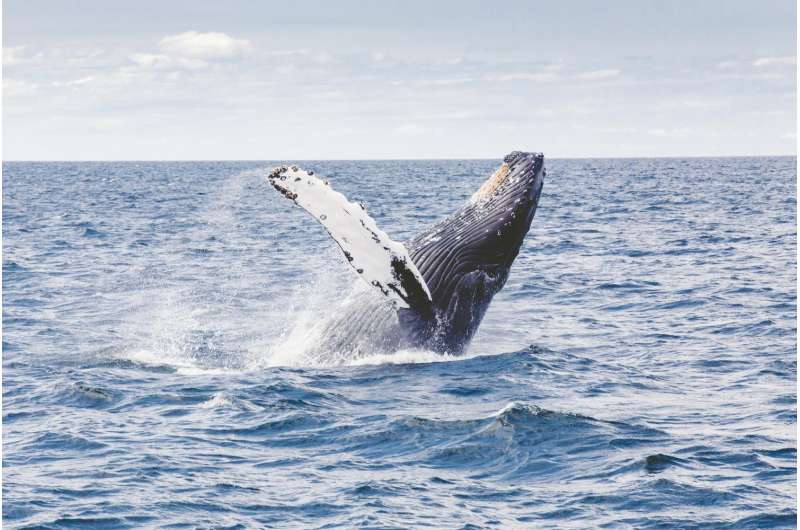May 2, 2018 report
Higher humpback whale pregnancy rates suggest they are rebounding

A team of researchers with members from several institutions in the U.S. has found that pregnancy rates for humpback whales living near Antarctica are increasing. In their paper published in Royal Society Open Science, the group describes studying the whales and what the increased rates may mean for them.
The humpback whale was very nearly extinguished from the planet during the 18th and 19th centuries due to humans hunting—prior research has suggested that population levels dropped to 10 percent of pre-hunting days. But over the past half-century, laws protecting them have boosted survival. Those that live below the equator have fared so well since whaling regulations were enacted that they are no longer considered to be endangered. And now, it appears that global warming is actually helping them rebound even more, the new study suggests.
To assess how well the humpbacks are doing, the researchers traveled to the Western Antarctic Peninsula and used boats to take blubber samples using dart guns through the years 2010 to 2016. Blubber samples can be tested for progesterone levels and also gender. The team reports that they were able to test 268 females and 239 males. They report that 60 percent of the females tested appeared to be pregnant. The percentage rose as the years passed, suggesting a relatively constant upswing in whale pregnancy rates. Increasing rates of pregnancies is a good sign for a population on the rebound, the team notes. The researchers suggest part of the reason for the increase in pregnancy rates is global warming, which has provided an average of 80 more ice-free days per year, allowing the whales to feed on krill more easily.
But the long-term outlook is not so rosy, the researchers note. A reduction in sea ice due to global warming will also mean a reduction in krill populations—they feed on the zooplankton that resides on the underside of the ice. Less krill to go around will make it more difficult for all of the creatures that feed on the tiny crustaceans.
More information: Logan J. Pallin et al. High pregnancy rates in humpback whales ( Megaptera novaeangliae ) around the Western Antarctic Peninsula, evidence of a rapidly growing population, Royal Society Open Science (2018). DOI: 10.1098/rsos.180017
Abstract
Antarctic humpback whales are recovering from near extirpation from commercial whaling. To understand the dynamics of this recovery and establish a baseline to monitor impacts of a rapidly changing environment, we investigated sex ratios and pregnancy rates of females within the Western Antarctic Peninsula (WAP) feeding population. DNA profiling of 577 tissue samples (2010–2016) identified 239 males and 268 females. Blubber progesterone levels indicated 63.5% of the females biopsied were pregnant. This proportion varied significantly across years, from 36% in 2010 to 86% in 2014. A comparison of samples collected in summer versus fall showed significant increases in the proportion of females present (50% to 59%) and pregnant (59% to 72%), consistent with demographic variation in migratory timing. We also found evidence of annual reproduction among females; 54.5% of females accompanied by a calf were pregnant. These high pregnancy rates are consistent with a population recovering from past exploitation, but appear inconsistent with recent estimates of WAP humpback population growth. Thus, our results will help to better understand population growth potential and set a current baseline from which to determine the impact of climate change and variability on fecundity and reproductive rates.
Journal information: Royal Society Open Science
© 2018 Phys.org



















